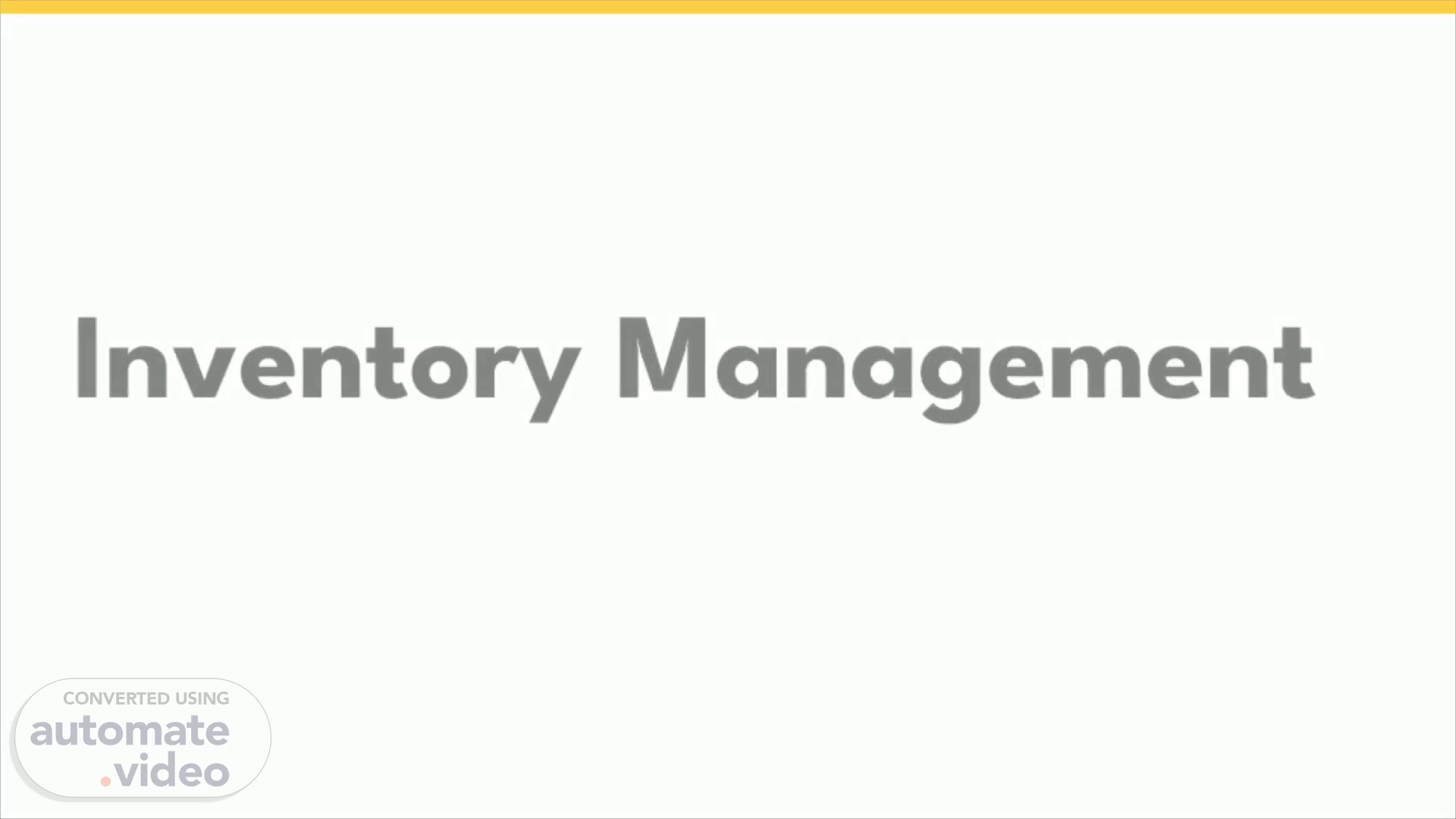
Inventory Management
Scene 1 (0s)
[Virtual Presenter] Hello and good day everyone! Our topic for today is all about inventory management. Before we proceed with our lecture, make sure that you have a paper, pen and calculator. You may also tae down important notes as we go on with our topic..
Scene 2 (20s)
[Audio] Let's start first with a short introduction about inventory management. First, inventory Management is the process of overseeing and controlling the flow of products or goods within a company. Efficient inventory management is crucial for optimizing supply chain operations, minimizing costs, and ensuring timely deliveries. By implementing advanced software systems and employing data-driven strategies, companies can streamline their inventory processes, reduce stockouts, and improve overall customer satisfaction. Second, It involves the acquisition, storage, and monitoring of inventory. Accurate forecasting and demand planning are key components of effective inventory management, enabling businesses to optimize inventory levels, reduce carrying costs, and prevent overstocking or shortages. Regular inventory audits and real-time tracking systems further enhance visibility, enabling timely adjustments and informed decision-making to maintain a lean and profitable inventory. Lastly, Effective inventory management can improve cash flow, reduce costs, and enhance customer satisfaction. By maintaining optimal stock levels and efficient order fulfillment processes, businesses can meet customer demands promptly, increasing their trust and loyalty..
Scene 3 (1m 43s)
[Audio] Let's move on to the types of inventory. There are 5 basic types of inventory. Raw materials, Work-in-progress, Finished goods, Maintenance, repair and operations or the MRO inventory, and last but not the least, the transit inventory. 1. Raw materials are the components used in the production process. Examples are wood, steel, and plastic for furniture manufacturing. 2. Work-in-progress are partially completed products in various stages of manufacturing. For example in garments industry are clothing items being stitched, including partially sewn garments awaiting finishing touches. 3. Finished goods on the other hand are products ready for sale or distribution. For example in consumer electronics: Smartphones, laptops, and televisions that have undergone quality checks and packaging and are ready for sale. 4. Maintenance, repair and operations (MRO) inventory are goods necessary for supporting production and operations. For tools and equipment some examples are hand tools, power tools, welding machines, or diagnostic devices necessary for maintenance and operations. 5. Transit inventory are inventory in transit between locations. Examples include goods being transported by trucks such as products being shipped from a manufacturing facility to a distribution center or from a distribution center to retail stores..
Scene 4 (3m 26s)
[Audio] Companies also use their inventories to fulfill customers orders promptly. We can deliver their orders without delay. Another is that inventory serves as a safety net to meet unexpected fluctuations in demand or supply. We also now that some products have peak seasons. Lastly, inventory is stocked to support marketing campaigns and promotions. By having ample inventory on hand, businesses can capitalize on the heightened consumer interest and purchasing intent created by the campaigns, ensuring that customers can easily access and purchase the promoted products without delays or stockouts..
Scene 5 (4m 7s)
[Audio] The following are the objectives of inventory management. Minimize holding costs by reducing costs associated with carrying excess inventory. Ensure stock availability to avoid stockouts and meet customer demand effectively. Optimize order quantity by determining the right amount of inventory to order in each replenishment cycle. Reduce lead time by streamline processes to shorten the time it takes to restock inventory. Minimize stock obsolescence that prevent inventory from becoming outdated or unsellable..
Scene 6 (4m 44s)
[Audio] Next are the relevant inventory costs which includes the following: Carrying costs: These are expenses incurred to hold inventory, such as warehousing, insurance, and obsolescence. Ordering costs: These are expenses associated with placing and receiving orders, including paperwork and transportation. Shortage costs: These are costs incurred when inventory is insufficient to meet demand, such as lost sales and customer dissatisfaction. Stockout costs: It results from stockouts, including emergency shipments and production downtime. Opportunity costs: is the potential loss of revenue if capital is tied up in inventory instead of being used elsewhere..
Scene 7 (5m 36s)
[Audio] We can use different Mathematical Models to determine Order Quantity. The following are: Economic Order Quantity (EOQ): A formula that determines the optimal order quantity by balancing holding costs and ordering costs. Reorder Point (ROP): The inventory level at which a new order should be placed to avoid stockouts. Just-in-Time (JIT): An inventory management strategy that aims to minimize carrying costs by receiving inventory only when needed. For this topic, we are going to focus at Economic Order Quantity and Reorder Point only..